A square metal wire loop of side 10 cm and resistance 1 ohm is moved with a constant velocity in a uniform magnetic field of induction as shown in the figure. The magnetic field lines are perpendicular to the plane to the loop (directed into the paper). The loop is connected to a network of resistors each of value 3 ohms. The resistances of hte lead wire OS and PQ are negligible. What should be the speed of the loop so as to have a steady current of 1 milliampere in the loop? Given the direction of current in the loop.
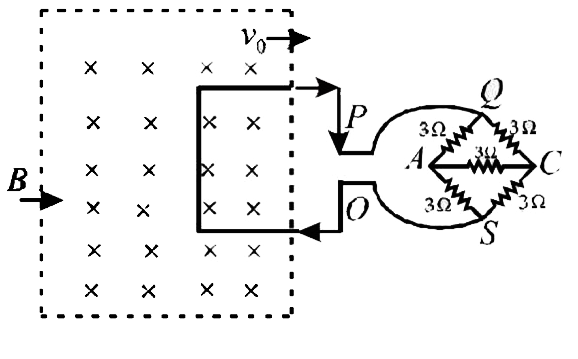
Network is balanced Wheatone bridge, no current in branch
Resistance of loop
Induced emf,
Induced current
implies
Flux is decreasing, induced current will be clockwise.
Topper's Solved these Questions
Similar Questions
A square metal wire loop of side 20 cm and resistance 2Ω is moved with a constant velcoity v0 in a uniform magnetic field of induction B = 1 Wb/m2 as shown in the figure. The magnetic field lines are perpendicular to the plane of the loop. The loop is connected to a network of resistance each of value 5Ω. The resistances of the lead wires BF and AE are negligible. What should be the speed of the loop, so as to have a steady current of 2 mA in the loop? Give the direction of current in the loop.
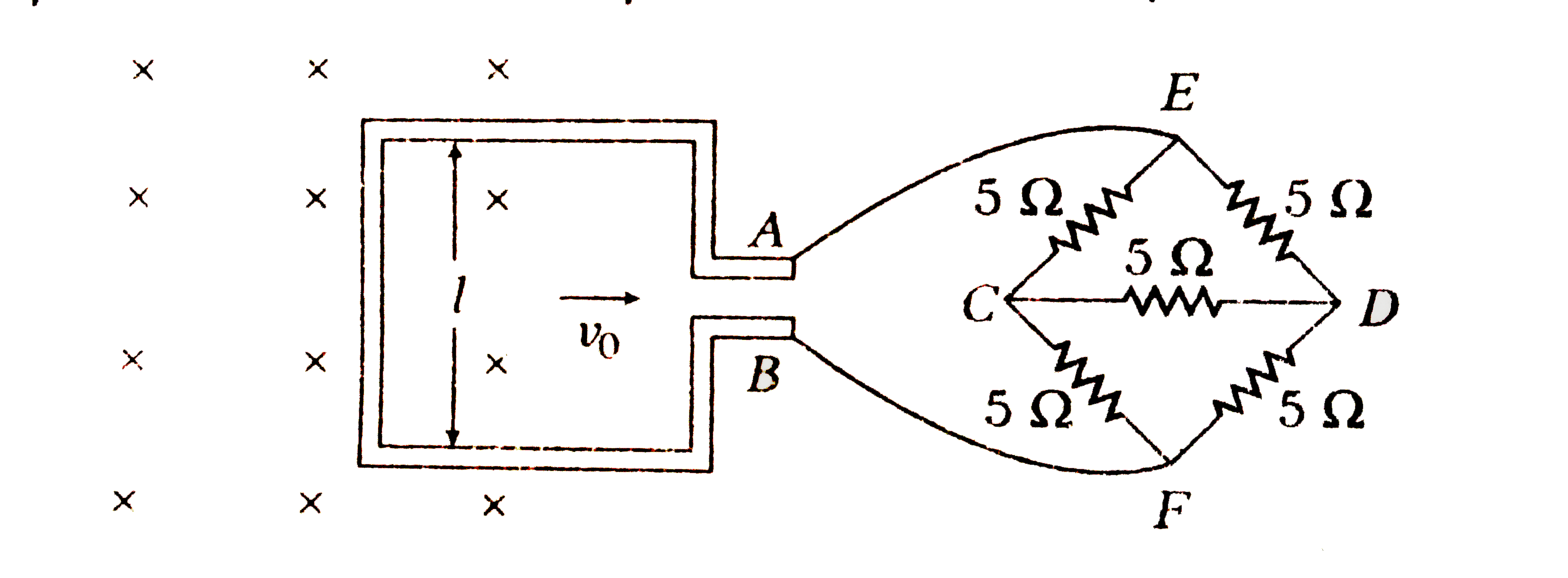
View SolutionA square loop of side 20 cm and resistance 1Ω is moved towards right with a constant speed v0. The right arm of the loop is in a uniform magnetic field of 5 T. The field is perpendicular to the plane of the loop and is going into it. The loop is connected to a network of resistors each of value 4Ω. What should be the value of v0 so that a steady current of 2 mA flows in the loop ?
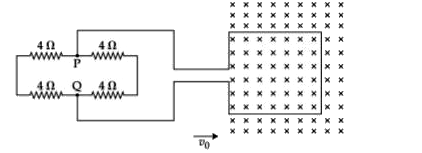
View Solution
Knowledge Check
A square metallic wire loop of side 0.1m and resistance of 1W is moved with a constant velocity in a magnetic field of 2wb/m2 as shown in figure. The magnetic field field is perpendicular to the plane of the loop, loop is connected to a network of resistances. what should be the velocity of loop so as to have a steady current of 1mA in loop?
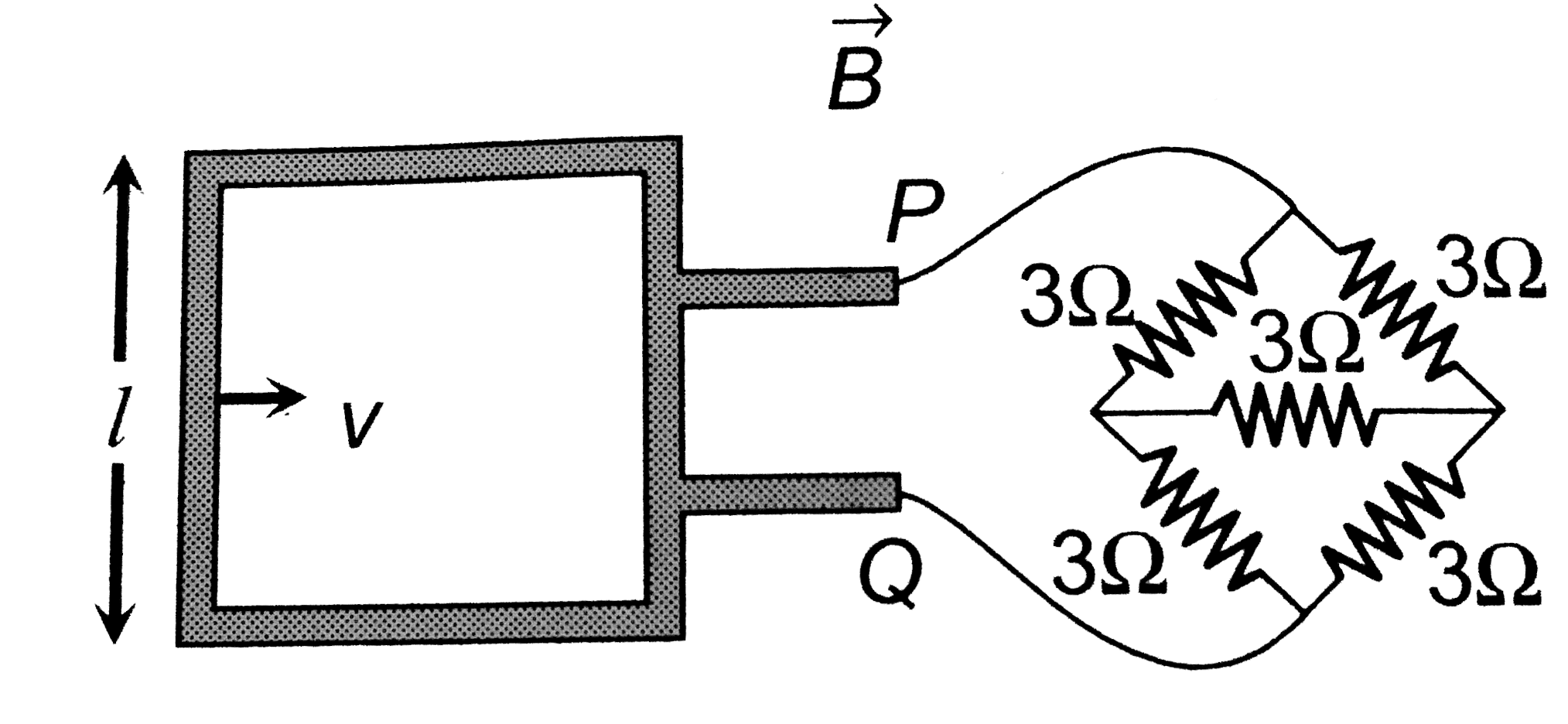 A1cm/secB2cm/secC3cm/secD4cm/sec
A1cm/secB2cm/secC3cm/secD4cm/secA metallic square loop ABCD is moving in its own plane with velocity v in a uniform magnetic field perpendicular to its plane as shown in the figure. An electric field is induced
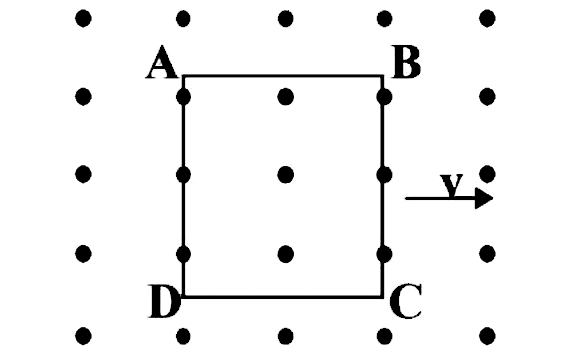 Ain AD, but not in BCBin BC, but not in ADCneither in AD nor in BCDin both AD and BC
Ain AD, but not in BCBin BC, but not in ADCneither in AD nor in BCDin both AD and BCA metalic square loop ABCD is moving in its own plane with velocity v is in a uniform magnetic field perpendicular to its plane as shown in the figure . An electric field is induced
 AIn AD , but not in BCBIn BC , but not in ADCNeither in AD nor in BCDIn both AD and BC
AIn AD , but not in BCBIn BC , but not in ADCNeither in AD nor in BCDIn both AD and BC
A circular loop of wire is carring a current i (as shown in the figure). On applying a uniform magnetic field inward perpendicular to the plane of the loop, the loop
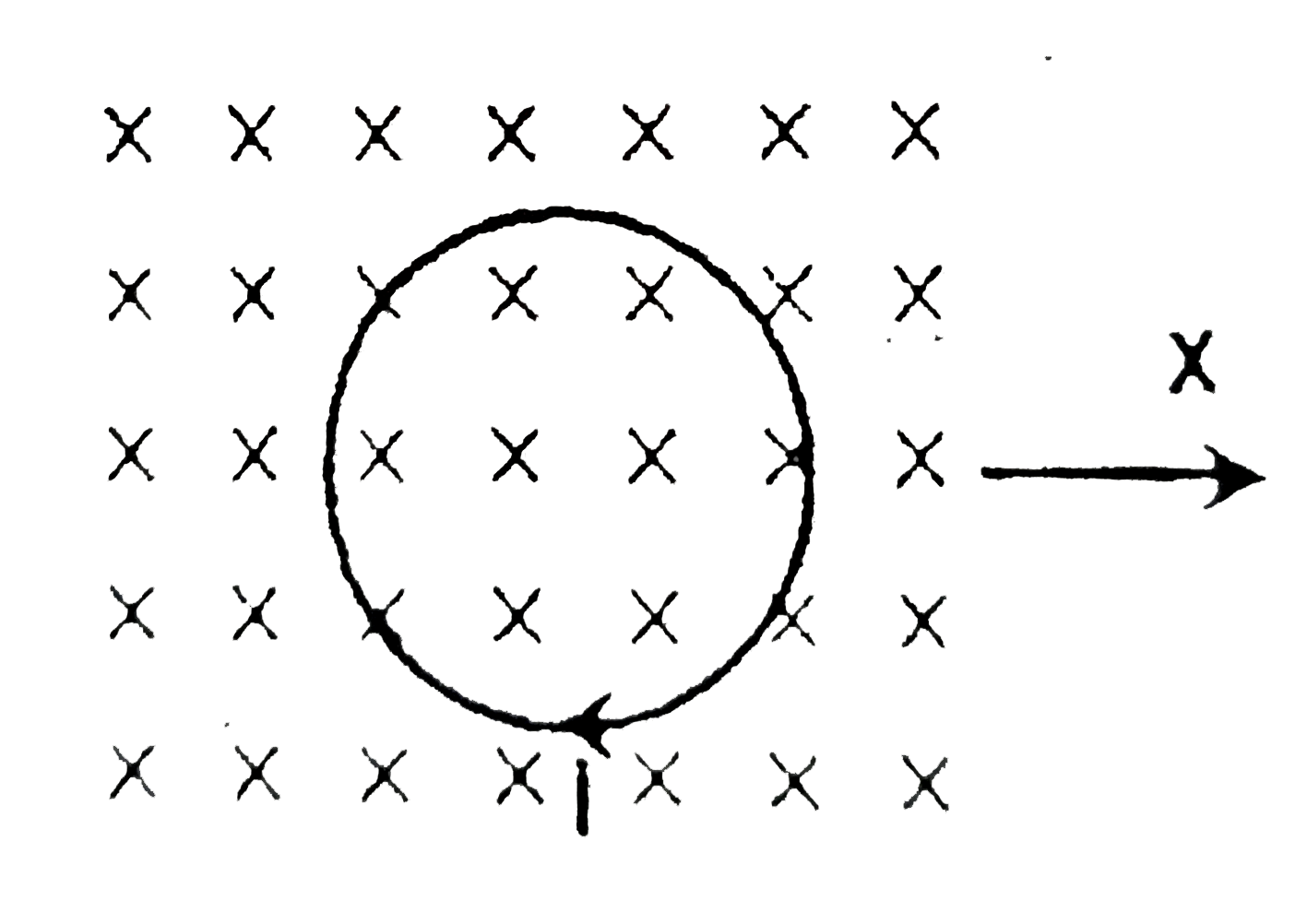
View SolutionA metallic square loop ABCD of size 15 cm and resistance 1.0Ω is moved at a uniform velocity of v m/s in a uniform magnetic field of 2 T, the field lines being normal to the plane of paper. The loop is connected to an electrical network of resistors, each of resistance 2Ω. Calculate the speed of the loop, for which 2 mA current flows in the loop.
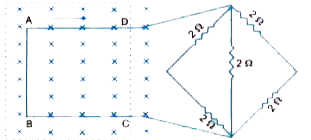
View SolutionA square loop of side d is moved with velocity vˆi in an non-uniform magnetic field B0axˆk then the emf induced shown is?

View SolutionThe magnetic field perpendicular to the plane of a loop of area 0.1m2 is 0.2 T. Calculate the magnetic flux through the loop (in weber)
View SolutionConducting square loop of side L and resistance R moves in its plane with a uniform velocity v perpendicular to one of its sides. A magnetic induction B, constant in time and space, pointing perpendicular and into the plane of the loop exists everywhere.
The current induced in the loop is
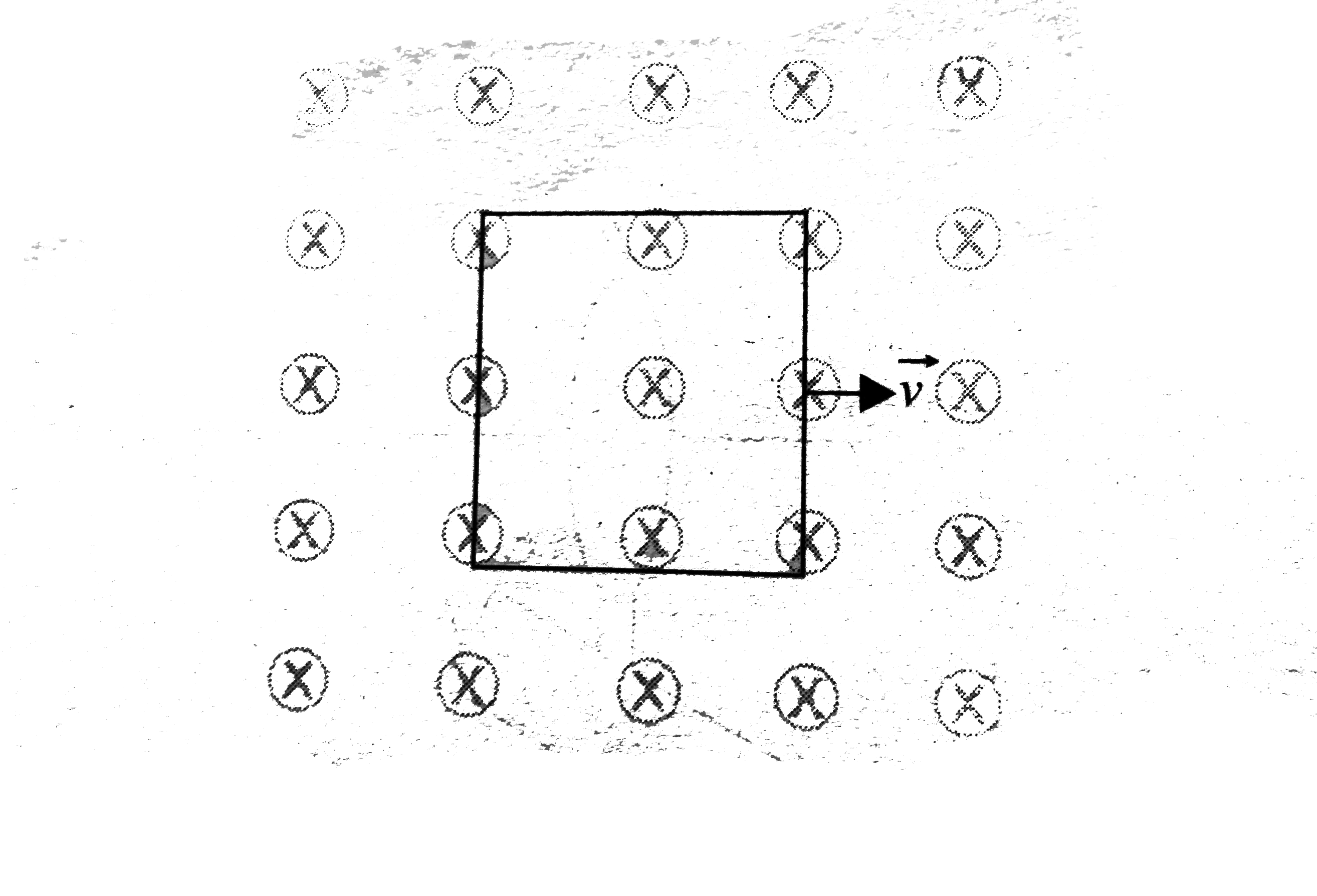
View Solution
